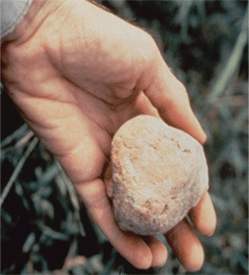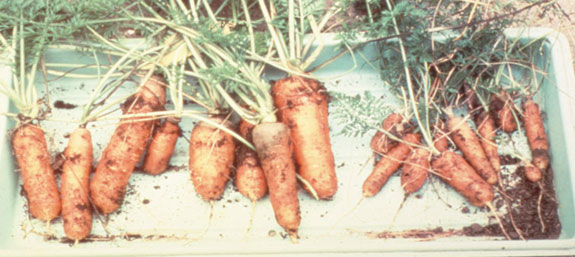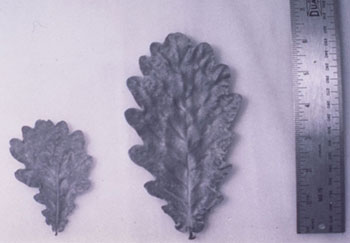Researchers want to use the ultrafine rock particles left by eroding glaciers — called ‘rock flour’ — to suck climate-warming carbon from the air
Glacier flour is on the mountain where ice has melted at the Ossoue glacier on the Vignemale peak in the French Pyrenees in September 2021. The Ossoue glacier is the highest and largest glacier in the French Pyrenees. Specialists project its disappearance near 2050 due to climate change. (Matthieu Rondel/AFP via Getty Images)
Minik Rosing grew up around the fine mud flowing from Greenland’s glaciers. It wasn’t until much later, when his own daughter had grown up and was in her mid-20s, that he realized how special it is.
During a family vacation in rural Greenland, where there was no electricity, she was fishing ice out of a milky-blue fjord for a gin and tonic when that mud gripped her feet so tightly that she had to abandon one of her boots.
As temperatures rise, meltwater is flushing out millions of tons of this stuff: ultrafine powder ground down by the island’s melting glaciers. Geologists have a culinary-sounding name for the microscopic particles: “rock flour.”
The loss of his daughter’s boot got Rosing thinking. Maybe those tiny grains of rock could be used to trap something much bigger: the carbon emissions that are altering the frozen landscape and way of life on the island.
“Greenland has been seen as the example and the horror story of climate change, and never been portrayed as a part of the solution,” said Rosing, a geology professor at the University of Copenhagen in Denmark who was born in Greenland.
As global emissions continue to rocket, he is part of a growing group of scientists looking for ways to suck carbon right out of the sky, an example of a sometime contentious suite of technologies called geoengineering.
For Rosing, the massive Arctic island’s exceptional mud represents not only a way of dialing back global warming but also an opportunity to change “the rest of the world’s impression of the Arctic” from ground zero for climate change to a solution for it.
Johanne Rosing after having been rescued from the mud in Nuuk Icefiord, Greenland, one gumboot in her hand and the other irretrievably stuck in mud. (Photo obtained by The Washington Post)
Petrifying the air
Give it enough time and most of the carbon dioxide that humanity is pumping into the air will be taken back by the planet. CO2 dissolves in rainwater and reacts with rocks to form carbon-containing compounds that lock the gas out of the atmosphere. That naturally occurring process, called “chemical weathering,” literally petrifies the air.
The problem — at least for us humans — is that chemical weathering takes millennia to work its carbon-absorbing magic. Humanity doesn’t have that kind of time: The U.N. Intergovernmental Panel on Climate Change says society needs to drastically reduce CO2 emissions by the end of the decade. The situation has gotten so bad that the panel of scientists says we need to develop ways of pulling carbon from the air to avert catastrophe.
So what if we could speed things up? What if, Minik Rosing and other scientists wonder, we exposed more carbon-absorbing rocks to the carbon-laden air? They call that technique “enhanced weathering.”
Most enhanced-weathering proposals involve pulverizing tons of basalt or other rocks and spreading them across the land. But all that crushing would consume an enormous amount of energy that might result in more greenhouse-gas emissions.
That’s where rock flour comes in.
Glaciers flow over the bedrock like a slow-moving river. Over centuries, the tremendous weight of the ice grinds the rock underneath into a fine powder only a few ten-thousandths of a centimeter, or microns, in diameter — finer than most sand found on a beach.
During a Zoom interview, Rosing poured a bit of cream-colored rock flour from Greenland onto his index finger and held it up to the camera.
“If you see here on my finger now,” he said, “there’s absolutely no grains you can see.” Greenland’s ice sheets have already done the hard, dirty work of milling the rocks. Rubbing his fingers, he said it felt as soft as talc, an ingredient in many baby powders.
The fineness of the grains is the flour’s advantage. It gives the substance an enormous surface area to expose to the air, making it an attractive candidate for enhanced weathering. That high surface area is also what gripped the boots of Minik Rosing’s daughter, Johanne Aviaja Rosing, so thoroughly. “Every time I tried to pull one foot up,” she recalled, “the other foot just went down.”
“Other groups or companies are looking at using other types of rocks for enhanced rock weathering, but they have to crush the material,” said Christiana Dietzen, a soil scientist working with Rosing. “Even if they’re doing that, they’re kind of lucky to get to a hundred microns.”
Fifteen-meter-thick glacial rock flour deposits, near Greenland’s capital, Nuuk. The marine delta deposit has been raised out of the sea since the last ice age. (Minik Rosing/University of Copenhagen)
The power of ‘rock flour’
To test how well rock flour stashes carbon, Rosing and Dietzen hauled about 200 tons of the stuff from Greenland for experiments.
The material packed a one-two punch, according to a pair of papers the researchers published last year: Not only did it suck up carbon when spread over farm fields in southern Denmark, but it also enriched the soil with nutrients and increased the yield of corn and potatoes in the first year of application.
The researchers estimate that, given enough time, spreading rock flour on all agricultural land in Denmark would suck up a quantity of carbon approximately equal to the annual emissions of that country (or of Hong Kong or Syria). Preliminary results show longer-lasting crop yields in nutrient-poor soil in Ghana.
“There’s a novelty to the idea in using pre-ground material,” said Bob Hilton, an Oxford geochemist not involved in the research. “There’s interest in the idea because glacier processes produce huge amounts of this material.”
But there is still a lot of work to do before any farmer begins dusting their fields with rock flour.
So far, the studies have only measured the crop yield and carbon-absorbing effects over short periods of time. The rock flour works best in certain soil — slightly but not too acidic. Rosing and other enhanced-weathering researchers need to measure more precisely how much CO2 their techniques are taking up, so farmers and others can eventually make money by selling carbon credits.
“It is not easy to figure out how much CO2 has been sequestered in these field operations,” said Susan Brantley, a geochemist at Pennsylvania State University.
Even though no extra energy needs to go into crushing rock flour, it may come with other environmental costs, such as the greenhouse-gas pollution from shipping it across the ocean and impacts on local ecosystems. And even though Greenland’s frigid waters slow the weathering process, rock flour would have already reacted with some CO2.
“Just because these areas look like sediment factories, if you like, doesn’t mean that the grains haven’t already reacted in some way,” Hilton said.
Last year, Rosing helped found the Rock Flour Company. It has raised $2 million and plans to seek approval from the government of Greenland, an autonomous territory of Denmark, to mine and export rock flour. The process of assessing the environmental and social impacts will take years.
“We have quite high environmental standards regarding our mining sector,” said Naaja Nathanielsen, a minster overseeing minerals in Greenland. “It’s a long process, and it’s not a one size fits all.” But she added that she expects scooping rock flour from the shore would have a lower impact than hard-rock mining for nickel and other minerals that other firms are eyeing in Greenland.
“It’s a tension I think about a lot in that I would love to accelerate the process from a personal perspective in order to have climate impact,” said Clive Eley, a Rock Flour Company board member. “But at the same time, you don’t want to accelerate to the detriment of its full potential.”
Rosing hopes rock flour not only alters the trajectory of climate change, but changes the perception of his birthplace, too. He was born in a small settlement on Nuuk Fjord in West Greenland, not far from where he extracted his magic mud.
“Greenland is already seen as the parking lot of problems,” he said. “The Arctic is seen as a victim with no agency, and it would be really nice for Greenland to be relevant to the world in a positive way.”
Dino Grandoni is a reporter covering wildlife, biodiversity and other climate and environmental issues. He is the author of Animalia, a column exploring the strange and fascinating world of animals.
Our Mission

Remineralize the Earth (RTE) promotes the use of natural land and sea-based minerals to restore soils and forests, produce more nutritious food, and remove excess CO2 from the atmosphere.
Our Vision
Given the immediate and growing threats of climate change, desertification, and increased food insecurity, Remineralize the Earth, through soil remineralization, is helping to create better soils, better food, and a better planet.
Through our research, education, advocacy, partnerships, and implementation we are:
- Regenerating soils and forests around the world
- Increasing the nutritional quality and yield of food production
- Stabilizing the climate
Why Remineralize?
In this unintended “experiment” in our garden, we remineralized soil in one raised bed with finely ground granite residue from a water well drilling site. The remineralized soil produced the carrots on the left. Carrots planted earlier, in soil not yet remineralized, but otherwise more improved, are shown at the right for comparison. Dust obtained from a mixture of rock types would have even more dramatic results, according to Weaver and Hamaker. These results were typical for all crops receiving rock dust in our 1985 garden.

Benefits of Remineralization
- Provides slow, natural release of elements and trace minerals.
- Increases the nutrient intake of plants.
- Increases yields and gives higher brix reading.
- Rebalances soil pH.
- Increases earthworm activity and the growth of microorganisms.
- Builds humus complex.
- Prevents soil erosion.
- Increases the storage capacity of the soil.
- Increases resistance to insects, disease, frost, and drought.
- Produces more nutritious crops.
- Enhances flavor in crops.
- Decreases dependence on fertilizers, pesticides, and herbicides.
One of many anecdotal photos sent over the years to the magazine in the early remineralization movement in the 1980s. These two oak leaves were sent by Jeannie Stevens from Victoria, Australia. The larger leaf was from an oak tree that was remineralized in March 1984. At that time the leaf was the same size as the smaller one on the left. There was a magnificent forest of seedlings under that tree in December 1986. The oak tree nearby with the smaller leaf on the left was not given an application of rock dust and had very few viable acorns and weak seedlings.

Soil Remineralization (SR) creates fertile soils by returning minerals to the soil in much the same way that the Earth does: during an Ice Age, glaciers crush rock onto the Earth’s soil mantle, and winds blow the dust in the form of loess all over the globe. Volcanoes erupt, spewing forth minerals from deep within the Earth, and rushing rivers form mineral-rich alluvial deposits.
Within silicate rocks is a broad spectrum of up to one hundred minerals and trace elements necessary for the well-being of all life and the creation of fertile soils. Glacial moraine or mixtures of single rock types can be applied to soils to create a sustainable and superior alternative to the use of ultimately harmful chemical fertilizers, pesticides, and herbicides.
SR has been shown in scientific studies to achieve fourfold increases in agricultural and forestry (wood volume) yields and to produce both immediate and long-term benefits from a single application.
Hundreds of thousands of tons of appropriate rock dust for soil and forest regeneration are stockpiled by the gravel and stone industry.